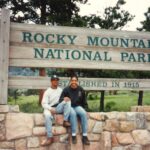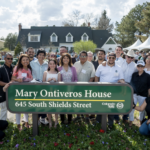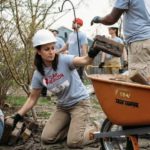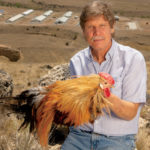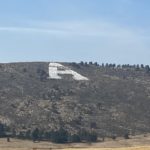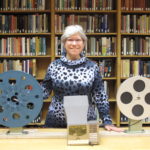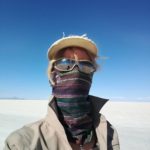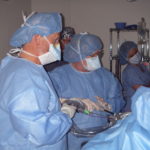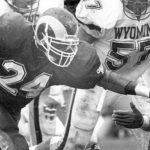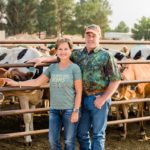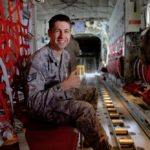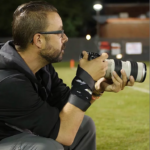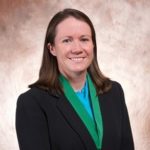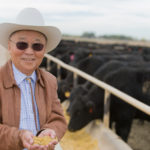Most people haven’t heard of the Navajo-Gallup Water Supply Project but when it’s completed in 2029, it will supply drinking water to 250,000 people in New Mexico.
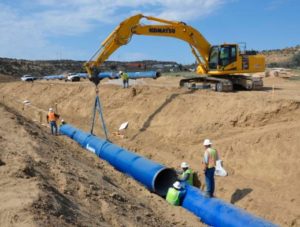
The Bureau of Reclamation project was authorized in 2009 by then-U.S. President Barack Obama at an initial cost of almost $900 million. This major infrastructure project draws water from the San Juan River to provide a reliable source of residential and industrial water delivered via 19 pumping stations, two water treatment plants, and two pipelines totaling 300 miles. The Navajo Nation and Indian Health Service are building smaller distribution systems that connect to individual communities.
Those areas currently rely on rapidly depleting groundwater that is of poor quality and inadequate to meet the current and future demands of the population. Worse still, more than 40 percent of households in the Navajo Nation rely on hauling water to meet their daily needs, and limited access to clean water also impacts the ability of the Jicarilla Apache people to live and work outside the reservation town of Dulce.
Since the project’s inception, Colorado State University alumni, working in Colorado and New Mexico, have played integral roles in the project’s development and success. Among those former students are Patrick Page (B.S., ’89) and Bart Deming (B.S., ’96), who followed each other as the project construction engineer in the Reclamation’s Four Corners Construction field office located in Farmington, New Mexico, overseeing the nearly 20-year construction project.
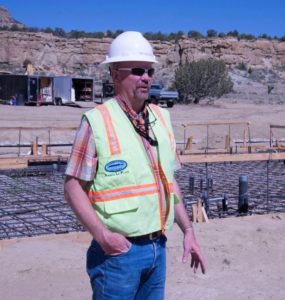
Page, who was raised in Collbran, Colorado, a small town near Grand Junction, began his undergraduate studies in Gunnison at Western State College of Colorado (now named Western Colorado University). Although he had been accepted to Colorado State and liked its strong engineering program, he opted to attend a smaller school and complete the required engineering prerequisites before transferring to CSU, which he did in 1987.
Along with several other civil engineering students, Page worked on campus at the Pi Beta Phi sorority house on Lake Street serving lunch and dinner. “Being a hasher worked out great because we had free parking and free food. You can’t beat that.”
Like so many students, Page has fond memories of his time at CSU. Compared to the rural towns he had lived in, Fort Collins was a big city but it didn’t take long to drive into the mountains on the weekends, and that helped him feel more at home. He had a lot of good times at CSU, which is why he and his wife, Nina, became CSU Alumni Association members.
During his summers as a student, Page worked on survey teams for the Department of Interior’s Bureau of Land Management throughout western Colorado. That job gave him experience in the federal government, which he believes played a key role in his being hired by another DOI agency, the Bureau of Reclamation, as a civil engineer in the Durango field office only a month after graduation in January 1990.
At the time, Reclamation was increasing staff in anticipation of the start of construction on the Animas-La Plata Water Project, which was designed to satisfy a water rights settlement of the Ute Mountain Ute and the Southern Ute Indian Tribes. The project was controversial, and construction was delayed by almost a decade during which time Page had the opportunity to lead a new water conservation program for five years.
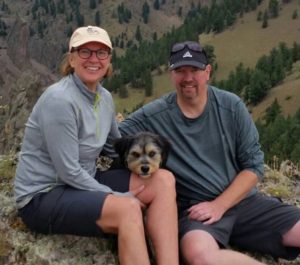
“That was one of the best jobs I’ve ever had,” he said. “I formed a lot of relationships with the water districts and the tribes that benefitted me the rest of my career.” Page then became group chief for water operations and supervised reservoir operations for about 10 years before accepting a position in 2011 in the Farmington office as the deputy to Barry Longwell (B.S., ’82), the Navajo-Gallup project construction engineer. Since then, both the deputy and the project construction engineer have been CSU alumni with degrees in civil engineering.
“The fingerprints of CSU alumni are all over the Navajo-Gallup project and the Navajo San Juan water rights settlement,” said Page. “The previous and current managers of the Grand Junction office are CSU alumni (Carol DeAngelis (B.S., ’78) and Ed Warner (B.S., ’81) respectively), and one of the leading advocates for Navajo water rights and water development is John Leeper (Ph.D., ’89). So, we’re everywhere!”
Page served as Longwell’s deputy for nine years before becoming the project construction engineer in 2020 and naming Bart Deming as his deputy. In 2021, the 100-mile-long eastern pipeline, or Cutter Lateral, was completed and began delivering water to about 6,000 people in the Navajo and Jicarilla Apache Nations.
Page retired in January 2022 after 32 years of federal service. He is spending more time with Nina, a retired nurse formerly with Mercy Hospital in Durango, and their two rescue dogs, the newest of which is a puppy named Mona they rescued in December from the Navajo Nation. Page plans to become more involved as a consultant on tribal water issues.
* * * *
When you join the Colorado State University Alumni Association, you become part of something bigger – a global community of green and gold that keeps alumni connected to the University and each other. Annual members, Pat and Nina Page, are making an impact on current students and future Rams through their volunteerism and donations; providing support for alumni programming, outreach, and nationwide engagement; and preserving time-honored traditions that bind us together as Rams. You can make a difference too, and gain access to benefits such as exclusive invites, bookstore savings, career services, and more. Become a member today!


